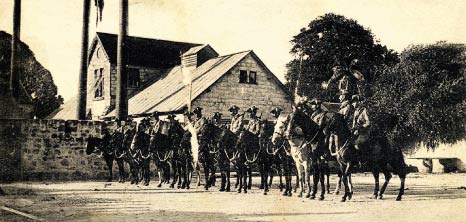|
MilitaryThe military in Barbados is relatively small but plays an essential role in safeguarding national security and supporting disaster relief efforts. Here are some key points about the military in Barbados: Barbados Defence Force (BDF)The Barbados Defence Force is the military organization responsible for the defense and security of Barbados. It comprises several branches:
Roles and Responsibilities
History and Development
Leadership and Structure
Civil-Military Relations
ConclusionWhile Barbados is known for its peaceful and stable society, the Barbados Defence Force remains a critical institution in ensuring national security, protecting maritime interests, and supporting humanitarian efforts. The BDF's commitment to professionalism and service reflects its role as a guardian of Barbados' sovereignty and a contributor to regional security efforts in the Caribbean. |



